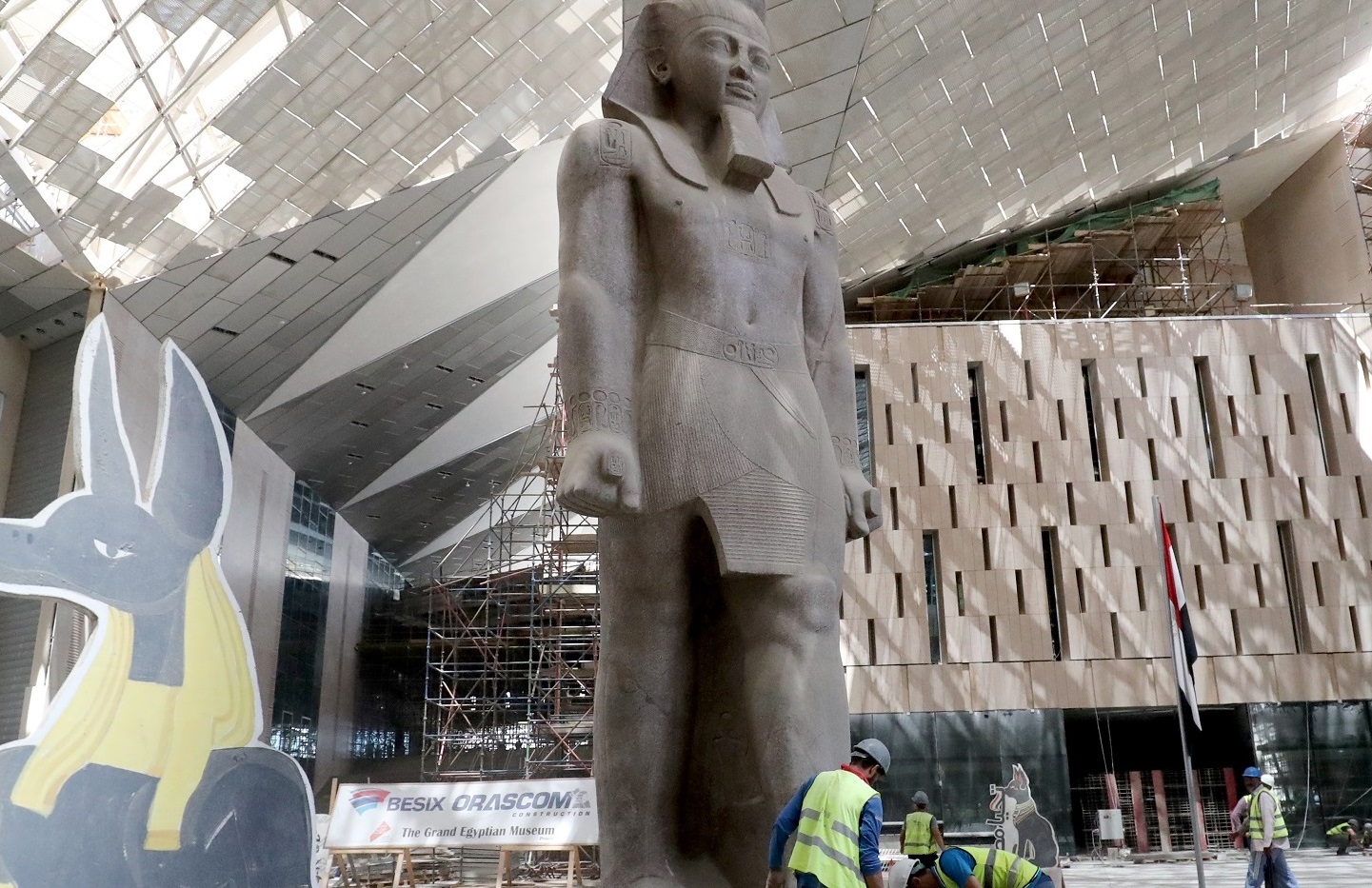
- ARAB NEWS
- 27 Apr 2024

 The 3,200-year-old pink-granite colossal statue of King Ramses II in the Grand Egyptian Museum in Cairo. (AFP)[/caption]
The 3,200-year-old pink-granite colossal statue of King Ramses II in the Grand Egyptian Museum in Cairo. (AFP)[/caption]Mohamed El-Shamaa
Restoration work on two new statues of King Ramses II received the green light from Egyptian Minister of Antiquities during his visit to Luxor recently.
Khaled Al-Anani gave his approval to a new international project involving the restoration and reinstallation of the statues of the Pharaonic ruler on the western side of the temple.
The plan comes after the restoration and re-assembly of three statues of King Ramses II on the main facade of Luxor Temple over the past three years .
Ahmed Oraby, managing director of the temple, said the statues belonged to the 19th Pharaonic dynasty and are made from red granite.
The remains and blocks of these statues were discovered from 1958 to 1961 during the excavations of the famed archaeologist Dr. Mohamed Abdel-Kader.
The Restoration Of The Statues, Which Fell To Pieces Years Ago, Have Aroused Some Controversy. This Stemmed From The Fact That One Of The Recently Restored Statues Stands In The Osirian Position, The "Death Position" Of The Ancient Egyptians, In Which The Statue'S feet are together.
That runs contrary to the tradition followed in Egyptian temples, which is not to put the statues of kings in this position.
The Ministry of Antiquities, however, said that it had replaced the statue where it found its broken parts, at the front of the temple.
Talking about the new project, the director of the temple, Ahmed Arabi, said: “We recently found pieces of the two other statues of Ramses II in the western facade of the temple. found. ”
Arabi said that the statues will be renovated in cooperation with the Egyptian archaeological mission led by Dr. Mustafa Waziri, secretary-general of the Supreme Council of Antiquities, under the supervision of Ahmed Badr El-Din, director of Luxor Temple, and the Chicago Institute of Oriental Archeology, headed by Dr. Ray Johnson.
Work has begun on studying the two statues and assembling and documenting their blocks.Each statue is seven meters high, again in the Osirian position.
Dr. Waziri confirmed that the two statues have been placed next to the other statues in preparation for restoration.He said that there is writing on one of the pieces bearing the name Ramses II.
The pieces include the upper half of a statue, two parts from the shoulders overlapping each other, the dress and the statues' necks.It also has parts of the face.
King Ramses II is one of the most famous monarchs of ancient Egypt, who ruled from 1279 to 1213 BC.